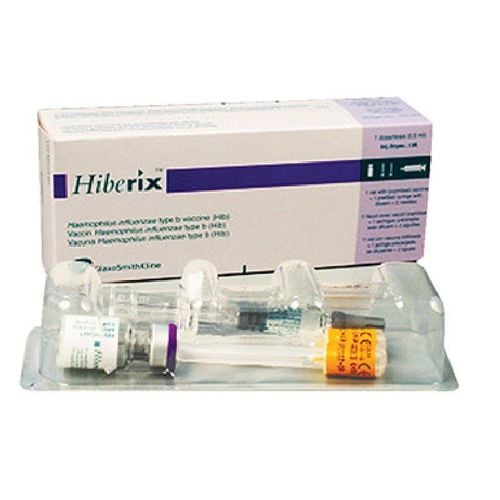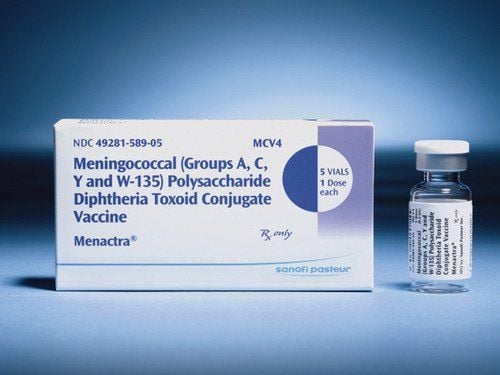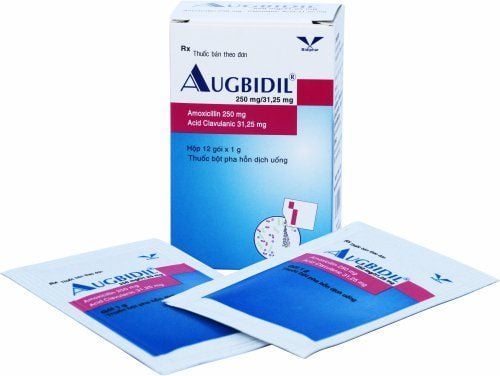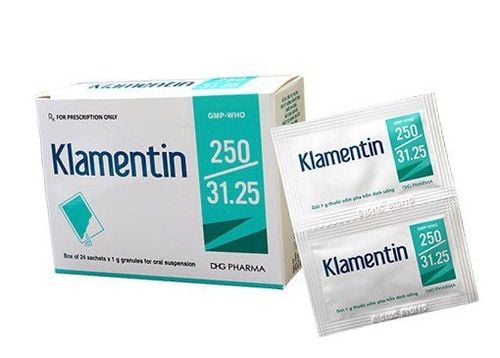This is an automatically translated article.
Cefotaxime is usually given by injection, intravenously, or intramuscularly. Oral cefotaxime is only used in the treatment of gonorrhea after parenteral administration for complete cure.
1. What is Cefotaxime?
Cefotaxime is a 3rd generation cephalosporin antibiotic, belonging to the group of antifungal, antiviral, anti-infective, anti-parasitic drugs with a broad antibacterial spectrum, with the main ingredient being Cefotaxime sodium. This active ingredient has an inhibitory effect on bacterial cell wall synthesis.Cefotaxime is prepared in the form of powder for injection, powder mixed with solution for injection. The drug is indicated for use in the treatment of the following conditions:
Gonorrhea, urinary tract infections. Cellulitis, boils, impetigo, abscess. Respiratory tract infections cause otitis media, sinusitis, bronchitis, pneumonia. Enteritis caused by bacillus dysentery. Meningitis . Septicemia Prevention of infection in surgical treatment.
2. Dosage and administration of Cefotaxime
Cefotaxime is prescribed by the doctor for intramuscular or intravenous injection. For intravenous injection, to avoid serious side effects, inject the drug slowly over a minimum of 3 minutes.
The maximum dose of Cefotaxime is 12g/day, the dose depends on the patient's health status and treatment purposes, specifically as follows:
Gonorrhea: 1g intramuscular injection. Disseminated gonorrhea: 1g IV every 8 hours and continue for 1-2 days when the disease improves. Then switch to oral cefotaxime for a minimum of 1 week. Uncomplicated infections: 1g intramuscularly or intravenously every 12 hours. Moderate to severe infections: 1-2g intramuscularly or intravenously every 8 hours. Severe life-threatening infections: 2g IV every 4 hours. The maximum dose is 12g/day. Sepsis: 2g IV every 6-8 hours. Central nervous system infections, meningitis: 2g IV every 6 hours. The duration of treatment with Cefotaxime depends on the strain of bacteria, 1 week for uncomplicated meningitis and from 2 to 3 weeks for complicated meningitis. Respiratory tract infections, pneumonia in the community: 1g dose every 6-8 hours. Purulent respiratory tract infections: 6g daily dose. Prophylactic treatment of intraoperative infections: 1 single dose of 1-2g 30-60 minutes before surgery. Prophylaxis of infection in cesarean section: Cefotaxime 1g intravenously after umbilical cord clamping, intravenously or intramuscularly after the next 6 and 12 hours. Newborns under 1 week old: Intravenous 50mg/kg/time, every 12 hours. Newborns from 1 to 4 weeks old: Intravenous 50mg/kg/time, every 8 hours. Infants from 1 month old to under 12 years old, weighing less than 50kg: 50-100mg/kg/day, divided into 2-4 times. In severe infections, higher doses can be used as treatment for meningitis, and when necessary, up to 200mg/kg and 150mg/kg in neonates. Children weighing more than 50 kg: Use Cefotaxime at the same dose as adults but maximum 12g/day. Patients with severe renal impairment with creatinine clearance less than 10 ml/min: Reduce dose by half after the initial loading dose while keeping the number of injections per day to a maximum of 2 g/day. Patients with hepatic impairment: No dose adjustment is required, in case of concomitant renal failure. Treatment with Cefotaxime overdose if symptoms of severe diarrhea persist for a long time, it is necessary to consider the patient with pseudomembranous colitis, then it is necessary to stop taking the drug and replace with another effective antibiotic. colitis. Or if the patient shows signs of poisoning, the drug should be stopped and treated immediately.
3. Side effects of the drug Cefotaxime
Cefotaxime can cause some unwanted side effects with the following frequency:
Most common side effects: Nausea, vomiting, colitis, diarrhea, pain at the injection site, itching, reactions. inflammation, thrombophlebitis. Less common side effects include: Changes in gut bacteria, drug-resistant bacteria causing superinfection, leukopenia. Rare: Hypersensitivity reactions, even anaphylaxis, hemolytic anemia, thrombocytopenia and agranulocytosis, Clostridium difficile diarrhea, pseudomembranous colitis, elevated bilirubin and liver enzymes. If you see any of the above symptoms, the patient should immediately contact a pharmacist, doctor or go to a medical facility for advice and guidance.
4. Some notes when using Cefotaxime
Carefully investigate the patient's history of allergy to penicillins, cephalosporins or other drugs before treatment with Cefotaxime because Cefotaxime may cause cross-allergy between penicillins and cephalosporins. Check renal function as the drug can cause nephrotoxicity if used concurrently. When testing urinary tract with reducing agent, do not use enzyme method, the drug can cause false positive. In patients with severe renal impairment, the dose of Cefotaxime should be reduced. In patients with a history of convulsions, caution should be exercised when using the drug. Patients with renal impairment should not reduce the dose because of possible increased risk of convulsions. If convulsions occur, the drug should be discontinued immediately and treatment for convulsions treated. Cefotaxime should be administered to pregnant women only if clearly needed because the drug may cross the placenta during the second trimester. Breastfeeding women can be treated with Cefotaxime, however, if the child shows signs of diarrhea, rash, it is best to be cautious and not use the drug. Cefotaxime if used with colistin increases the risk of kidney damage, azlocillin in people with renal failure causes partial seizures and encephalopathy, ureido - penicillin in people with weak renal function reduces clearance. Cefotaxime is an antibiotic, used to treat fungi, bacteria, and parasites that cause infections in the respiratory tract, blood, nervous system as well as urinary and genital organs. Cefotaxime is also used to prevent infection in surgery, cesarean section.
Please dial HOTLINE for more information or register for an appointment HERE. Download MyVinmec app to make appointments faster and to manage your bookings easily.













